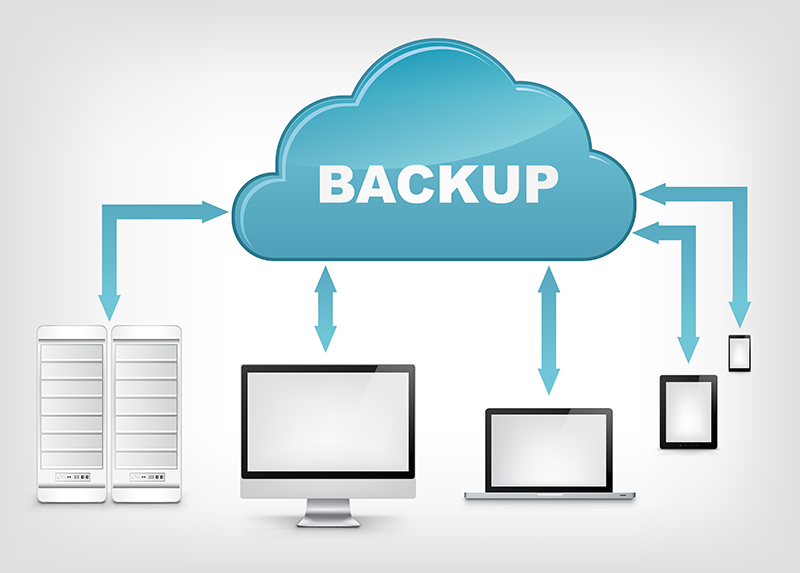What Happens to Redundancy If Company Goes Bust? A Guide to Your Rights
What Happens to Redundancy If Company Goes Bust? A Guide to Your Rights
Blog Article
Exploring the Operational Dynamics of Company Redundancy and Its Long-Term Sustainability

Redundancy Techniques for Service Connection
In order to make sure nonstop operations, organizations need to implement reliable redundancy approaches for organization continuity. Redundancy in this context describes the duplication of important parts or functions within a system to reduce the impact of prospective failings. By integrating redundancy strategies, companies can enhance their durability against interruptions triggered by various elements such as natural disasters, devices failings, or cyber-attacks.
One usual redundancy approach is the implementation of backup systems and information storage space services. This includes producing matches of vital information and systems that can be turned on in situation of a primary system failure. Furthermore, companies can develop redundant communication networks and power sources to maintain connection and operations during unanticipated events.
Additionally, cross-training workers to do numerous functions within the firm can function as an important redundancy method. This ensures that essential tasks can still be accomplished also if key personnel are inaccessible as a result of disease or various other reasons. On the whole, efficient redundancy approaches are vital for businesses to copyright functional continuity and decrease the effect of possible disturbances.
Impact of Redundancy on Business Resilience
Given the essential duty redundancy approaches play in guaranteeing service connection, exploring the effect of redundancy on organizational durability comes to be necessary for comprehending the all natural operational characteristics of a company. Organizational strength refers to an entity's capacity to adjust to interruptions, recoup from problems, and transform when necessary while keeping core functions. Redundancy, when purposefully executed, can significantly add to improving an organization's resilience when faced with unexpected difficulties. By having back-up systems, personnel, or processes in position, firms can better withstand shocks and continue procedures with marginal disturbance.
Additionally, redundancy can reinforce worker spirits and self-confidence, recognizing that there are contingency plans in area to address unforeseen circumstances. This complacency can result in boosted efficiency and an extra positive workplace. Furthermore, redundancy can foster innovation and imagination within a company as staff members feel empowered to take calculated threats, knowing that there is a security web to sustain them in case of failing. In general, the effect of redundancy on organizational strength is extensive, forming the long-lasting sustainability and success of a business.
Balancing Performance and Flexibility in Redundancy
Attaining a harmonious balance in between operational efficiency and adaptive adaptability is a crucial difficulty in the strategic deployment of redundancy within organizations. Reliable procedures are vital for maintaining productivity and cost-effectiveness, ensuring that sources are utilized ideally. read here However, too much focus on performance alone can cause rigidness, making it challenging for companies to adjust to unpredicted changes or challenges. On click for info the various other hand, flexibility allows companies to respond nimbly to advancing conditions, fostering advancement and strength. Yet, way too much versatility without a solid functional foundation can cause inefficiencies and disparity.
To stabilize efficiency and versatility in redundancy planning, organizations must thoroughly analyze their operational demands, market dynamics, and strategic objectives. Inevitably, discovering the best equilibrium in between efficiency and adaptability is crucial for constructing a durable and sustainable company in the face of uncertainty.
Long-Term Sustainability Via Redundancy Planning
To guarantee enduring feasibility and security, companies must tactically align their redundancy preparation with long-lasting sustainability objectives, therefore harmonizing operational efficiency with adaptive versatility. Business must watch redundancy not as a responsive remedy to immediate problems but as a positive approach for long-term success.

Positive Procedures for Sustainable Business Workflow
Just how can companies proactively improve their functional sustainability for lasting success? Implementing positive procedures is essential for business aiming to make certain sustainable operations. One essential method is to buy modern technology and development to enhance procedures, reduce waste, and stay competitive out there. Taking on lasting techniques such as minimizing power intake, decreasing carbon impact, and maximizing source application can not just profit the environment but also lead to cost savings in the long run.
In addition, cultivating a society of continual improvement and knowing within the organization can enhance versatility to transforming market conditions and customer demands. Encouraging employee participation in decision-making processes and supplying chances for professional growth can improve morale, performance, and total performance. Developing clear objectives, keeping an eye on essential efficiency signs, and consistently examining progress are vital elements of proactive sustainability monitoring.
Working together with suppliers, clients, and other stakeholders to home advertise sustainable methods throughout the supply chain can create a causal sequence of favorable effect - redundancy pay if company goes bust. By taking proactive actions in the direction of functional sustainability, business can construct durability, drive innovation, and protect their long-term success in an ever-evolving service landscape
Conclusion

In the world of organizational monitoring, the calculated deployment of firm redundancy stands as a critical yet intricate method that necessitates a fragile balance in between operational effectiveness and long-lasting stability. By exploring the functional dynamics that underpin firm redundancy and evaluating its broader effects for organizational strength and adaptability, a nuanced understanding of exactly how redundancy strategies can shape the future trajectory of a firm begins to unravel.Given the vital duty redundancy techniques play in making certain company connection, exploring the effect of redundancy on business resilience comes to be crucial for understanding the all natural operational dynamics of a company. In general, the effect of redundancy on business resilience is extensive, shaping the long-lasting sustainability and success of a business.
In verdict, recognizing the functional dynamics of firm redundancy is vital for guaranteeing lasting sustainability.
Report this page